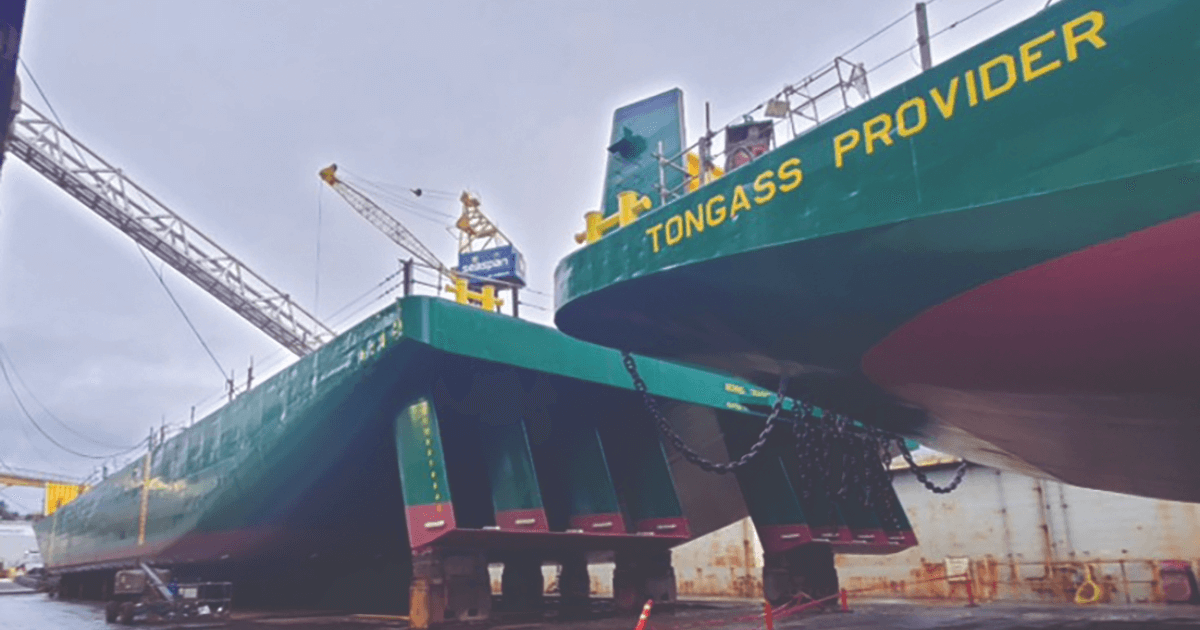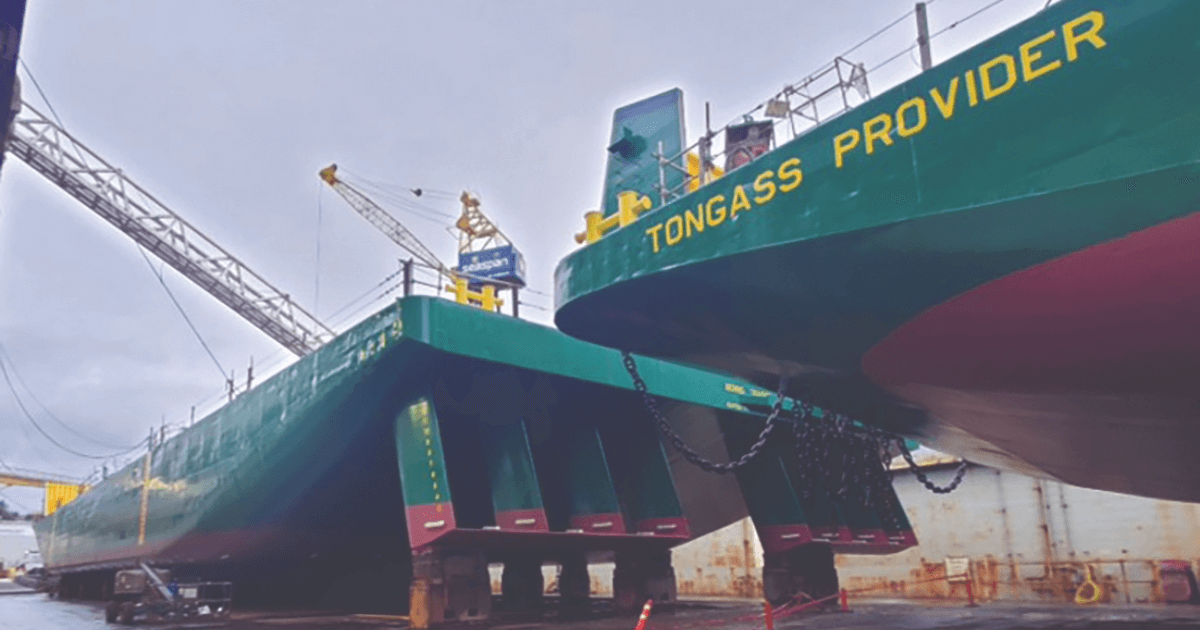 Maintaining a fleet of 32 barges is a big job. Besides federal and state regulations for safety and vessel worthiness, Alaska Marine Lines has its own stringent requirements for its vessels. The Lynden companies are known for exceptionally well-maintained and reliable equipment and, for barges, drydock inspections are part of the ongoing maintenance plan. “We just finished a double docking of the Bering Trader and Tongass Provider at Seaspan in Vancouver, Canada,” explains Kris Mullan, Alaska Marine Lines Port Engineer. (see photo)
Maintaining a fleet of 32 barges is a big job. Besides federal and state regulations for safety and vessel worthiness, Alaska Marine Lines has its own stringent requirements for its vessels. The Lynden companies are known for exceptionally well-maintained and reliable equipment and, for barges, drydock inspections are part of the ongoing maintenance plan. “We just finished a double docking of the Bering Trader and Tongass Provider at Seaspan in Vancouver, Canada,” explains Kris Mullan, Alaska Marine Lines Port Engineer. (see photo)
Barges undergo major internal structural exams (ISE) by the Coast Guard twice every five years. Steel and mechanical repairs are common at this time, as well as a fresh coat of paint. “It’s unusual to do two barges at once, but extremely time efficient,” Kris says. “The process takes about 27 days.” Alaska Marine Lines has a carefully coordinated schedule for maintenance and repair with three to six barges in drydock every year. The Alaska Trader just got out of drydock in November.
Kris spent the month of December in Canada, supervising the drydock of the two barges. His counterpart, Port Engineer Gurhan Civan, traveled to Sitka last month to inspect another barge. The two port engineers spend most of the year traveling to various locations for inspections.
“Keeping vessels maintained and in top condition for customers is no small task. There are a lot of gears that make the wheel turn,” Kris explains, referring to the others in the Maintenance Operations group. “We try to do as much pre-planning as possible.”
Marine Engineering Manager David Byrne is joined by Kent Connelly, Vessel Inspection Lead, who handles vessel maintenance and Jeannette Doyle, Administrative Assistant, overseeing administrative tasks, scheduling and regulatory compliance documents. Arranging dates for drydock and inspections means barges are pulled from the fleet which must be coordinated with other Lynden companies and Seattle Service Center Manager Tom Crescenzi’s operations team. Adding to the challenge is limited shipyard space for repairs and maintenance. There might also be a wait for an open drydock or weather may prevent a vessel from getting to the shipyard for the appointment.
Sometimes underwater inspections may take the place of a drydock inspection. Underwater Inspection in Lieu of Dry-Docking (UWILD) is used as an alternative to the conventional drydocking method. The submerged part of the vessel hull is inspected by divers while in operation to reduce downtime, travel time and cost. “We’ll go down to West Seattle, and supervise the inspections from the dive boat,” Kris says. “If someone finds an issue, we get that vessel repaired and back in the water as quickly as we can to safely serve our customers.”
According to Kris, the next barge up in the maintenance schedule is the Alaska Provider in Tacoma in October, and he’ll be there keeping a watchful eye on the inspection.

